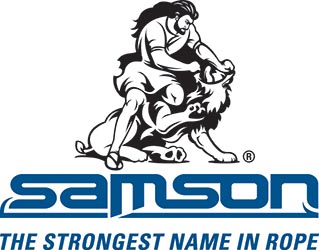World Championships of Punkin Chunkin 2012 - Arrival and Setup
Posted Nov 23, 2012 by Matt | Tags: WCPC
This is the first in a series of posts coming about the 2012 World Championships of Punkin Chunkin.
This year the chunk had a rough go of it. In fact, mere weeks before the chunk it looked like the event might not happen, as the various lawyers involved had yet to agree on a new insurance policy for the event. This was resolved in nearly the 11th hour, barely in time to proceed with field set up and the like.
Then there was Hurricane Sandy.
Those on the east coast, particularly in the northern half of the country, are well aware of the impact Hurricane Sandy had. New York city's subways flooded out. Much of the New Jersey coast wrecked. Many lives lost. And on and on. The hurricane went ashore in fact not very far north of the field used for the chunk in Bridgeville, Delaware. There was a good chance the chunk would be cancelled, but the decision was made to press on and see what came. Teams were permitted to move their machines onto the field in advance of the storm on Saturday and Sunday morning. Some teams took advantage of this, mostly those who were nearby and could make the trip and get back to work for a few days (though Yankee Siege, Tired Iron, Launch-Ness Monster, Chunk Norris, and American Chunker - all the New Hampshire teams - all made the trip down too and waited out the storm in hotels).
The storm hit the Delaware/Maryland area with heavy force on Sunday afternoon and Monday, just a couple days before the chunk was due to start. Come Tuesday, the rains had mostly stopped, but not before well over 10" had fallen on the area. The field was under several inches of standing water EVERYWHERE. Those that saw the TV show about the chunk this year saw some brief footage of the state of the field.
Team Urban Siege had initially planned to head down to the field on Wednesday, get on late in the afternoon, and set up Thursday morning. Well, they announced that teams would not be permitted to move in until mid-day Thursday at the earliest due to concerns about tearing up the field and the like. This would make it very tough to have everyone ready to fire come Friday morning. We were quite concerned about this for our machine especially, since while we'd done a lot of testing with NASAW during the fall, there were still a few tuning kinks that needed ironing out that it looked like we weren't going to get. Nevertheless, we headed down as planned on Wednesday, with Matt getting there early in the afternoon and the rest of the crew meeting at the hotel early in the evening. The trebuchet and the equipment trailer both got parked in the back of the hotel for the night, luckily they were pretty empty that night and space was not a problem. During the afternoon Matt had been at the field and saw that the field was actually in surprisingly good shape, with the mechanical side of the line probably good enough to carefully move onto that day!
Come Thursday, the event for Friday had been cancelled, which was clearly needed. Nick this year had built a second competitive entry, a human-powered centrifugal catapult, which meant that that division was going to exist again for the first time in many years. Since he needed to do some more work on it, we headed to the nearby Lowe's parking lot to get some materials and then work for a few hours before heading to the field around noon. We headed to the field and got there right around noon, when they had said teams would be allowed on the field. This was not the case. So instead, we lined up behind several other teams on the side of the road to wait to be let in. During this time, Chris, Andy, Jason, and Nick got busy raising and securing NASAW's towers and mounting the arm onto the carriages while Matt walked to the other end of the field to get the check-in packet. After that, it was just a lot of chatting with various friends, including Trey from First in Fright and several of the American Chucker guys.
But the big story was the machine being worked on a few feet in front of ours: Whomping Willow. This machine was the brand-new machine built by Trey's son and his friends for the Youth 11-17 Trebuchet Division. Next year (2013) they will be moving up to the Adult Trebuchet Division, and they built an impressive monster of a machine that utilizes a revolutionary design. More on that later, but suffice to say it was impressive to watch them work on it to get it ready (they had yet to fire the machine at this point!).
Finally, around 2PM they began to let teams onto the field. The mechanical side of the field of course had been pretty decent for a good day now, and so for the most part teams were able to get to their pits without much trouble. Being one of the heaviest rigs left that had not moved in yet on that side (NASAW plus the F-550 we use to tow it weighs in at about 23,000 pounds gross), we had a brief moment of trouble in one spot, but got into our pit without needing assistance. We got things set up pretty quickly since all we needed to do to NASAW at this point was crib it. A little time was needed to assemble and position Nick's Centrifugal Machine (named the Binford Rotopult 2000), but still we left before dark pretty much ready for our safety inspections which we expected would begin the next morning.
Friday came and was a strange day. We were able to get inspected pretty early since we were ready to go. No problems there, and probably the easiest time we have had with getting someone to inspect us in 5 years of competition. But we were not allowed to fire test shots. The backstop netting that is positioned to protect the crowds had not been put up before the hurricane (understandably), and was still not up. Despite the lack of any spectators being around (the site was opened to the public to come in and watch for free but there weren't many people that came) they did not want us firing without the netting... This was very frustrating especially since it took until 1:30 that afternoon for them to BEGIN to install the netting. We really needed to do some test shooting, and so did pretty much everyone in the mechanical divisions. You can''t just shoot them right off the bat and be 100% correct in tuning and the like. A couple of teams with new machines got to take a single safety test shot under heavy supervision, but we were obviously not one of those teams (Nick's centrifugal did get to take a shot though). So pretty much no one got to do any test shooting before the event except for the air cannons, who don't need backstop netting since there is no chance of them firing backwards. We were going to have to be shooting from the hip the next day it appeared.
That said, the field was amazingly ready to go come Saturday morning. Crews worked through the night to get the backstop netting up. Everything else was in place as well. Really the field lucked out in that it is a really well-draining field (we have seen this first-hand a couple of times before though this was certainly an extreme case) and it was well inland from where the damage was done along the coast. While it had gotten wet, it hadn't suffered any major damage and so the chunk was on!









